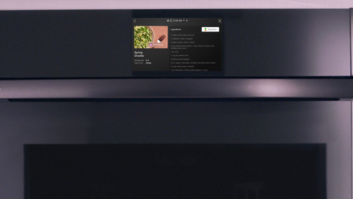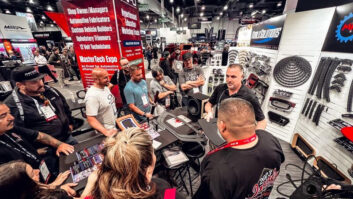With the upcoming launch of the Napa mobile processor line and the Viiv entertainment platform, Intel intends to create an environment for experiencing digital content at home and on the road.
The technologies enable a wide variety of multimedia experiences for desktops and portables. Napa, which is based on the Yonah dual-core processor, will be integrated into 230 different computers this year, said Erik Reid, Intel’s product marketing director.
A complete list of launch partners for Viiv and Napa are not yet available, but both platforms will be available during the first quarter for inclusion in third-party computers. Intel CEO Paul Otellini is scheduled to make a keynote address today at International CES.
Napa represents the next-generation in Intel’s Centrino processor brand, offering several major improvements over the current Sonoma chips. This includes a 68 percent jump in performance, enabling the computer to simultaneously do several processor-intensive projects like video rendering and number crunching, something the current crop of Intel processors cannot accomplish. Napa also delivers a 28 percent improvement in battery life, to an average of five hours, and it will come with the Intel 945 chipset and the company’s 3945 ABG solution for better wireless networking connectivity.
Despite having two cores, the processor itself is much smaller than its predecessors, said Reid, giving vendors extra space in the chassis to add functionality.
Napa is optimized to work with Windows Media Center 2005 as well as the upcoming Microsoft Vista operating system. Napa allows better mobile-television viewing and the dual-core processors allow for the creation of a better-than-average gaming solution in a notebook format, Reid said, adding that Intel has created a software patch for game developers that makes it possible for their titles to take advantage of the dual-core processors. Reid gave a quick gaming demo at a press event in December that showed Napa improving the frames per second (fps) rendered rate on Doom to well over 80 fps from about 50 fps.
Viiv is a much different animal than Napa. Where the latter is a distinct piece of hardware, Viiv is a collection of chipsets that will greatly improve the home entertainment experience consumers now receive using Windows Media Center Edition. While Viiv does improve certain aspects of a computer-based home entertainment system, its primary intention is to bring a CE-like experience, commonly called the 10-foot interface, to applications like downloadable TV programming, movies and being able to distribute this content around a home via a network. The Viiv platform will work with and connect to televisions, computers and handheld devices.
“You can do a lot of this today, but it’s not easy,” said Bill Leszinske, Intel’s digital home marketing and planning director. “Viiv will make it easer, and Viiv is ensuring a great experience especially with a remote,” he added.
Brian Fravel, Intel’s campaign manager, said starting in the first quarter Viiv chipsets will be included in higher-end MCE PCs using Pentium D, Intel Extreme and Yonah mobile processor. Viiv-enabled systems will feature instant on/off, like a TV. Because Viiv requires a dual-core PC, it will have the power to do several tasks at once, such as downloading a movie and doing work at the same time, Leszinske said.
Intel has already announced several Viiv hardware and content partners, including TiVo, NEC, Movielink, Napster, Ulead, Sonic Systems and Pinnacle, with several top-tier CE vendors expected to come on board at CES, Leszinske said. These could include TVs with built-in Ethernet ports to new network-ready set-top boxes.
However, this does not mean consumers will have to toss away their current TV and DVRs and start from scratch. Legacy CE products will be able to connect into a Viiv-based system through new network capable set-top boxes. Intel will test all and label them Viiv-certified, meaning that they will function with similar devices, he said.
Intel showed a variety of concept designs being created by its launch partners. These ranged from a small appliance-like device the size of a Harry Potter book, to a conventional PC tower, to a CE component look. All these design types are expected to ship during 2006, Intel said.
Intel will surround the Viiv launch with a massive marketing plan that, a first for Intel, will include co-marketing efforts with its vendor partners. The advertising targets two specific consumer groups, the “Txpert,” mainly tech savvy, early adopter males, and the “trendy” women who like gadgets less for the technology than because they are new and cool.













